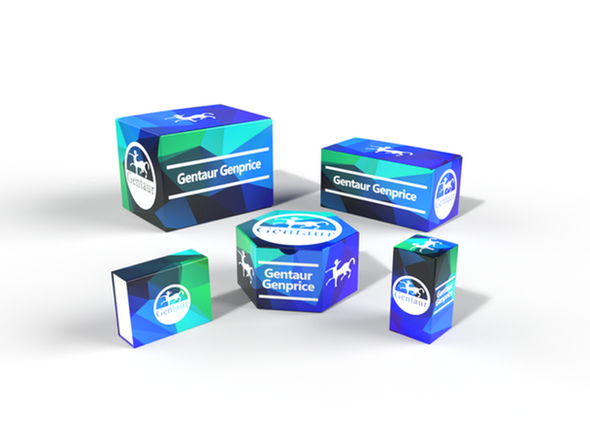Description
TRIAD3A Antibody | 3371 | Gentaur UK, US & Europe Distribution
Host: Rabbit
Reactivity: Human, Mouse
Homology: N/A
Immunogen: TRIAD3A antibody was raised against a peptide corresponding to 15 amino acids near the amino-terminus of mouse TRIAD3A.
The immunogen is located within amino acids 120 - 170 of TRIAD3A.
Research Area: Innate Immunity
Tested Application: E, WB, IHC-P, IF
Application: TRIAD3A antibody can be used for detection of TRIAD3A by Western blot at 1 to 2 μg/mL. Antibody can also be used for immunohistochemistry starting at 10 μg/mL. For immunofluorescence start at 20 μg/mL.
Antibody validated: Western Blot in mouse samples; Immunohistochemistry in mouse samples and Immunofluorescence in mouse samples. All other applications and species not yet tested.
Specificiy: N/A
Positive Control 1: Cat. No. 1401 - Mouse Heart Tissue Lysate
Positive Control 2: N/A
Positive Control 3: N/A
Positive Control 4: N/A
Positive Control 5: N/A
Positive Control 6: N/A
Molecular Weight: Predicted: 95 kDa
Observed: 95 kDa
Validation: N/A
Isoform: N/A
Purification: TRIAD3A Antibody is Ion exchange chromatography purified.
Clonality: Polyclonal
Clone: N/A
Isotype: IgG
Conjugate: Unconjugated
Physical State: Liquid
Buffer: TRIAD3A Antibody is supplied in PBS containing 0.02% sodium azide.
Concentration: 1 mg/mL
Storage Condition: TRIAD3A antibody can be stored at 4˚C for three months and -20˚C, stable for up to one year. As with all antibodies care should be taken to avoid repeated freeze thaw cycles. Antibodies should not be exposed to prolonged high temperatures.
Alternate Name: TRIAD3A Antibody: ZIN, CAHH, U7I1, TRIAD3, UBCE7IP1, ZIN, E3 ubiquitin-protein ligase RNF216, RING finger protein 216
User Note: Optimal dilutions for each application to be determined by the researcher.
BACKGROUND: TRIAD3A Antibody: Activation of NF-κB as a result of Toll-like receptor (TLR) and IL-1 receptor signaling is a major component of innate immune responses. Signals from these receptors are relayed by a number of adapter molecules such as TRIF, TIRAP, and MyD88. Several regulatory mechanisms exist to control TLR signal transduction, including the inhibition of TLR expression and signaling by molecules such as ST2 and SIGIRR. Another mechanism is by the ubi-quitinization of selected TLRs by TRIAD3A, an E3 ubiquitin-protein ligase. TRIAD3A is a RING finger protein that can bind to TLR4 and TLR9, and to a lesser extent TLR3 and TLR5, catalyzing the ubiquitization of these molecules. Overexpression of TRIAD3A promoted the nearly complete degradation of TLR4 and TLR9; this reduction was reflected in the decreased signal-specific activation by ligands specific for these TLRs. Conversely, depletion of TRIAD3A resulted in enhanced TLR activation.






